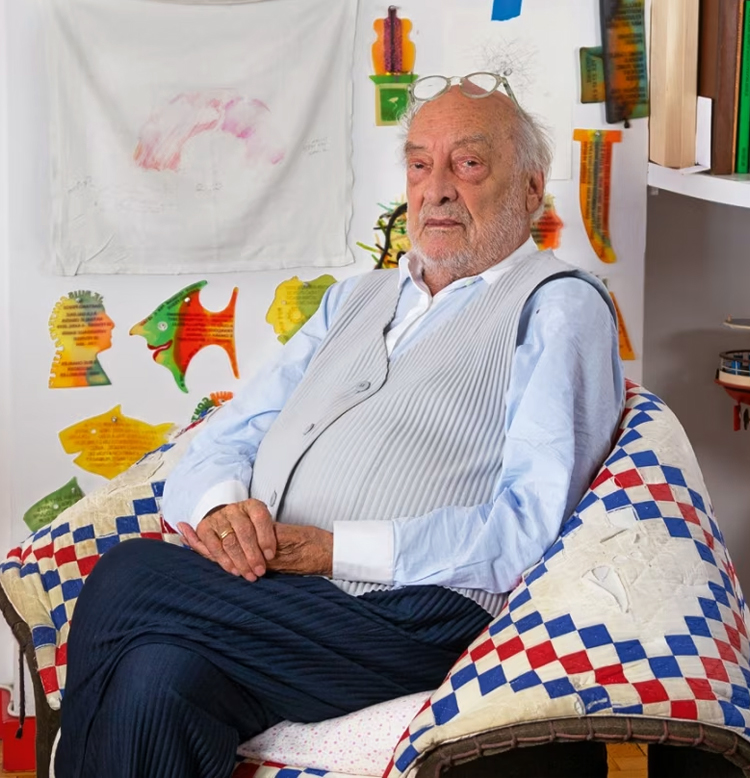Gaetano Pesce (8 November 1939 – 3 April 2024) was an Italian architect and a design pioneer of the 20th century. Pesce was born in La Spezia in 1939, and he grew up in Padua and Florence. He studied architecture at the University of Venice and wrote a manifesto in his youth in defense of the right to inconsistency in art, the need to change, to be free, not to repeat ourselves. The boundaries between art, design and industry become irrelevant in his production, because even art is a product, it is the creative response to the needs of the time in which we live.
His continuous research in the field of advanced materials, languages and technology has resulted in iconic productions such as the Up series (1969), composed of seven examples of seats with voluptuous shapes, including the Up5_6 armchair, the first product of industrial design called to convey a political message, to denounce the condition of women in the world. His outlook is considered broad and humanistic, and his work is characterized by an inventive use of color and materials, asserting connections between the individual and society, through art, architecture, and design to reappraise mid-twentieth-century modern life.
Pesce’s multidisciplinary work is represented in the permanent collections of the most important museums in the world including the MoMa and the Metropolitan Museum in New York, the Victoria and Albert Museum in London, the Center Georges Pompidou in Paris, the Vitra Museum in Germany and the Montreal Museum of Art, to name a few. His approach to design has marked its history and his works have been celebrated in exhibitions of extraordinary importance. Numerous companies produce his projects.






















